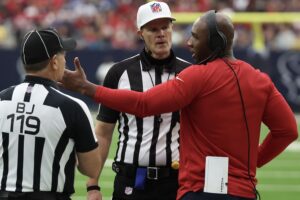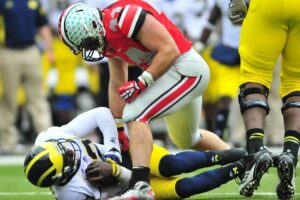Preakness Stakes Schedule Changes Possible
The traditional time line of the Triple Crown thoroughbred races, the most prestigious series in U.S horse racing, is on the brink of a significant alteration.
Officials behind the Preakness Stakes, the second leg of the Triple Crown, are mulling over the idea of rescheduling the race to four weeks after the Kentucky Derby. That’s a departure from the longstanding two-week gap, which has been traditional since 1969.
1/ST Racing oversees the Pimlico Race Course in Baltimore, Maryland, the home of the Preakness. It says it wants more time for horses and trainers to recover, rest and reset between Triple Crown races.
The issue of equine safety in American horse racing has been a pressing one this year. Churchill Downs, the home of the Kentucky Derby, suspended its calendar back in June after a series of horse fatalities, including two over the Derby weekend.
It moved its racing calendar to fellow Kentucky racecourse Ellis Park for the season, before recently announcing it is set to reopen for meets in September after a comprehensive review of safety procedures.
Related: Bet on the Preakness and other U.S horse races, via the best online sportsbooks
Safety Over Tradition
Aidan Butler, CEO of 1/ST Racing, said that horse safety was at the core of the decision. The Triple Crown races of the Kentucky Derby, Preakness, and Belmont Stakes have traditionally been held over the same time line every year since 1969, so the move will not be taken lightly.
“Allowing additional time between the Kentucky Derby and Preakness Stakes would give horses a greater opportunity to prepare and be ready between the Derby and the second leg of the Triple Crown,” he said.
“We have discussed it internally and believe it’s in the best interests of horses and horse safety to move the race four weeks after the Kentucky Derby.”
Stakeholders Weigh In
While the Preakness Stakes officials are open to change, not all stakeholders share the same enthusiasm.
The Triple Crown races have followed the same five-week schedule for more than 50 years. They start with the Kentucky Derby on the first Saturday in May, followed by the Preakness two weeks later, and concluding with the Belmont Stakes three weeks after the Preakness.
The New York Racing Association (NYRA), responsible for the Belmont Stakes, expressed reservations. “We have no plans to move the date of the Belmont Stakes,” said Pat McKenna, NYRA’s vice president of communications.
A shift in the Preakness date would also impact the Belmont Stakes. If the Preakness moves to early June, the Belmont could face the need for rescheduling to late June or even July to maintain a feasible Triple Crown calendar.
The horse racing industry has faced challenges, particularly concerning equine safety, and if two of three Triple Crown operators are making moves to address this, then the NYRA wouldn’t look good being left behind.
The recent internal investigation at Churchill Downs passed muster for now. But even Congress is interested in the ongoing results of the changes.
The potential change in its date underscores the evolving nature of the historic sport of horse racing in the modern era, and the ongoing debate between tradition and the well-being of the horses.
The Preakness Stakes was first held in 1873, meaning it is approaching its 150th anniversary.












